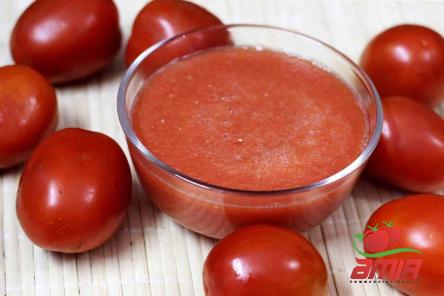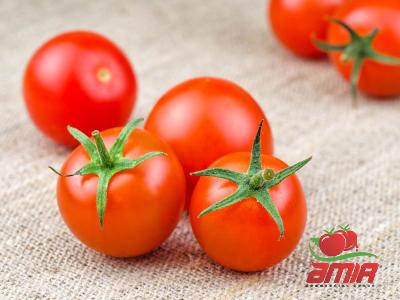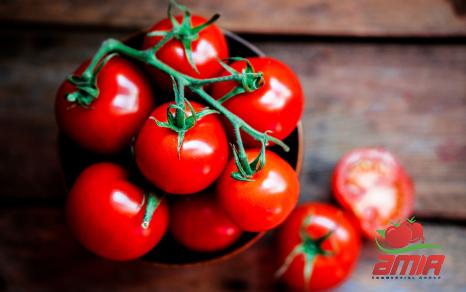Salty tomato paste is a kitchen staple that adds depth, richness, and flavor to a wide array of dishes. Whether you’re simmering a hearty pasta sauce, creating a savory marinade, or crafting a flavorful soup, salty tomato paste can elevate your culinary creations to new heights. In this comprehensive guide, we’ll delve into the world of salty tomato paste, exploring its origins, production methods, culinary uses, and health benefits. Join us as we unravel the savory secrets of this versatile ingredient! **The Origins and Evolution of Salty Tomato Paste** Tomato paste has been a beloved ingredient in Mediterranean cuisine for centuries, with its origins tracing back to the sun-drenched fields of Italy. The process of making tomato paste involves simmering ripe tomatoes until they reduce into a thick, concentrated form. The addition of salt not only enhances the flavor but also acts as a natural preservative, prolonging the shelf life of the paste. Over time, tomato paste has become a staple in kitchens around the world, beloved for its versatility and intense umami flavor. From Italian pasta sauces to Spanish sofritos, tomato paste plays a starring role in a wide variety of global cuisines. Its rich, savory taste adds depth and complexity to dishes, making it a must-have pantry essential for both home cooks and professional chefs. **The Production Process: From Field to Jar** The production of salty tomato paste begins in the sun-kissed fields where ripe tomatoes are harvested at the peak of freshness. These tomatoes are then washed, sorted, and processed to remove any impurities. Next, they are crushed and cooked down to extract their flavorful juices. The tomato puree is then strained to remove any seeds and skins, leaving behind a smooth, velvety liquid. This liquid is simmered slowly to evaporate the excess moisture, resulting in a thick, concentrated paste. During this process, salt is added to enhance the flavor and preserve the paste, ensuring that it maintains its quality over time.

.
 Once the paste reaches the desired consistency, it is carefully packaged in jars or cans to seal in its rich flavor. Whether you prefer the convenience of store-bought tomato paste or the satisfaction of making your own from scratch, there are plenty of options available to suit your culinary needs. **Culinary Uses: From Pasta to Pizza and Beyond** Salty tomato paste is a versatile ingredient that can be used in a wide range of dishes, from classic Italian recipes to global fusion creations. Its rich, concentrated flavor makes it a perfect base for sauces, soups, stews, and marinades. Here are a few creative ways to incorporate salty tomato paste into your cooking: – Pasta Sauces: Add a spoonful of tomato paste to your favorite pasta sauce to enhance the flavor and create a rich, velvety texture. – Marinades: Use tomato paste as a key ingredient in marinades for meats, seafood, and vegetables. Its umami-rich flavor will help tenderize and flavor your ingredients. – Soups and Stews: Stir tomato paste into hearty soups and stews to add depth and complexity to the broth. It pairs well with beans, vegetables, and meat. – Pizza Sauce: Whip up a quick and flavorful pizza sauce by combining tomato paste with herbs, garlic, and olive oil. Spread it on your pizza crust before adding your toppings for a burst of flavor. Whether you’re simmering a pot of Bolognese sauce, marinating grilled chicken, or stirring up a spicy curry, salty tomato paste is a versatile ingredient that can elevate your dishes to new heights. Experiment with different recipes and techniques to discover the endless culinary possibilities of this savory staple.
Once the paste reaches the desired consistency, it is carefully packaged in jars or cans to seal in its rich flavor. Whether you prefer the convenience of store-bought tomato paste or the satisfaction of making your own from scratch, there are plenty of options available to suit your culinary needs. **Culinary Uses: From Pasta to Pizza and Beyond** Salty tomato paste is a versatile ingredient that can be used in a wide range of dishes, from classic Italian recipes to global fusion creations. Its rich, concentrated flavor makes it a perfect base for sauces, soups, stews, and marinades. Here are a few creative ways to incorporate salty tomato paste into your cooking: – Pasta Sauces: Add a spoonful of tomato paste to your favorite pasta sauce to enhance the flavor and create a rich, velvety texture. – Marinades: Use tomato paste as a key ingredient in marinades for meats, seafood, and vegetables. Its umami-rich flavor will help tenderize and flavor your ingredients. – Soups and Stews: Stir tomato paste into hearty soups and stews to add depth and complexity to the broth. It pairs well with beans, vegetables, and meat. – Pizza Sauce: Whip up a quick and flavorful pizza sauce by combining tomato paste with herbs, garlic, and olive oil. Spread it on your pizza crust before adding your toppings for a burst of flavor. Whether you’re simmering a pot of Bolognese sauce, marinating grilled chicken, or stirring up a spicy curry, salty tomato paste is a versatile ingredient that can elevate your dishes to new heights. Experiment with different recipes and techniques to discover the endless culinary possibilities of this savory staple.
..
 **Health Benefits of Salty Tomato Paste** In addition to its rich flavor and culinary versatility, salty tomato paste also offers a range of health benefits. Tomatoes are rich in antioxidants, vitamins, and minerals that contribute to overall health and well-being. When tomatoes are concentrated into paste form, these nutrients become even more concentrated, making tomato paste a nutritional powerhouse. One of the key health benefits of tomato paste is its high lycopene content. Lycopene is a powerful antioxidant that has been linked to a reduced risk of certain types of cancer, heart disease, and other chronic conditions. In addition, tomatoes are a good source of vitamin C, potassium, and other essential nutrients that support immune function, heart health, and overall vitality. When choosing salty tomato paste, opt for products that are made with high-quality, organic ingredients and minimal additives. Look for brands that use ripe, flavorful tomatoes and natural sea salt to ensure that you’re getting the best possible flavor and nutrition in every spoonful. **In Conclusion: Embracing the Savory Delights of Salty Tomato Paste** Salty tomato paste is a versatile and flavorful ingredient that has earned its place in kitchens around the world. From its humble origins in Italian cuisine to its starring role in global dishes, tomato paste adds depth, richness, and umami flavor to a wide variety of recipes. Whether you’re simmering a pot of stew, whipping up a quick sauce, or marinating your favorite protein, salty tomato paste can elevate your culinary creations to new heights. Experiment with different recipes, techniques, and flavor combinations to unlock the full potential of this savory staple. So, the next time you reach for a jar of salty tomato paste, remember the rich history, production process, culinary uses, and health benefits that make this humble ingredient a true kitchen essential. Embrace the savory delights of salty tomato paste and let its bold flavor enhance your cooking adventures!
**Health Benefits of Salty Tomato Paste** In addition to its rich flavor and culinary versatility, salty tomato paste also offers a range of health benefits. Tomatoes are rich in antioxidants, vitamins, and minerals that contribute to overall health and well-being. When tomatoes are concentrated into paste form, these nutrients become even more concentrated, making tomato paste a nutritional powerhouse. One of the key health benefits of tomato paste is its high lycopene content. Lycopene is a powerful antioxidant that has been linked to a reduced risk of certain types of cancer, heart disease, and other chronic conditions. In addition, tomatoes are a good source of vitamin C, potassium, and other essential nutrients that support immune function, heart health, and overall vitality. When choosing salty tomato paste, opt for products that are made with high-quality, organic ingredients and minimal additives. Look for brands that use ripe, flavorful tomatoes and natural sea salt to ensure that you’re getting the best possible flavor and nutrition in every spoonful. **In Conclusion: Embracing the Savory Delights of Salty Tomato Paste** Salty tomato paste is a versatile and flavorful ingredient that has earned its place in kitchens around the world. From its humble origins in Italian cuisine to its starring role in global dishes, tomato paste adds depth, richness, and umami flavor to a wide variety of recipes. Whether you’re simmering a pot of stew, whipping up a quick sauce, or marinating your favorite protein, salty tomato paste can elevate your culinary creations to new heights. Experiment with different recipes, techniques, and flavor combinations to unlock the full potential of this savory staple. So, the next time you reach for a jar of salty tomato paste, remember the rich history, production process, culinary uses, and health benefits that make this humble ingredient a true kitchen essential. Embrace the savory delights of salty tomato paste and let its bold flavor enhance your cooking adventures!
…
 **Selecting and Storing Salty Tomato Paste: Tips for Quality and Longevity** When it comes to selecting salty tomato paste, there are a few key factors to consider to ensure that you’re getting the best quality and flavor. Look for products that are made with ripe, sun-ripened tomatoes and natural sea salt for the most authentic and delicious taste. Check the ingredient list to ensure that the paste contains minimal additives and preservatives, as these can affect the overall flavor and quality of the product. Opt for brands that use sustainable and ethical farming practices to support the environment and local communities. Organic and non-GMO options are also available for those who prefer to avoid pesticides and genetically modified ingredients in their food products. When storing salty tomato paste, keep it in a cool, dark place away from direct sunlight and heat sources. Once opened, transfer any leftover paste to an airtight container and refrigerate it to extend its shelf life. Use within a few days for the best flavor and quality, as tomato paste can start to lose its freshness and intensity once exposed to air. **Exploring Regional Varieties and Flavor Profiles** While traditional Italian tomato paste is well-known and beloved for its rich flavor and versatility, there are also regional varieties and flavor profiles to discover from around the world. From Spanish sofrito to Middle Eastern harissa, different cultures have their own unique take on tomato-based pastes and sauces, each with its own blend of herbs, spices, and seasonings. Exploring these regional varieties can inspire you to try new flavors and ingredients in your cooking. Whether you’re experimenting with Moroccan tagines, Indian curries, or French ratatouille, there’s a world of culinary possibilities to explore with salty tomato paste as your flavorful base. x
**Selecting and Storing Salty Tomato Paste: Tips for Quality and Longevity** When it comes to selecting salty tomato paste, there are a few key factors to consider to ensure that you’re getting the best quality and flavor. Look for products that are made with ripe, sun-ripened tomatoes and natural sea salt for the most authentic and delicious taste. Check the ingredient list to ensure that the paste contains minimal additives and preservatives, as these can affect the overall flavor and quality of the product. Opt for brands that use sustainable and ethical farming practices to support the environment and local communities. Organic and non-GMO options are also available for those who prefer to avoid pesticides and genetically modified ingredients in their food products. When storing salty tomato paste, keep it in a cool, dark place away from direct sunlight and heat sources. Once opened, transfer any leftover paste to an airtight container and refrigerate it to extend its shelf life. Use within a few days for the best flavor and quality, as tomato paste can start to lose its freshness and intensity once exposed to air. **Exploring Regional Varieties and Flavor Profiles** While traditional Italian tomato paste is well-known and beloved for its rich flavor and versatility, there are also regional varieties and flavor profiles to discover from around the world. From Spanish sofrito to Middle Eastern harissa, different cultures have their own unique take on tomato-based pastes and sauces, each with its own blend of herbs, spices, and seasonings. Exploring these regional varieties can inspire you to try new flavors and ingredients in your cooking. Whether you’re experimenting with Moroccan tagines, Indian curries, or French ratatouille, there’s a world of culinary possibilities to explore with salty tomato paste as your flavorful base. x










Your comment submitted.